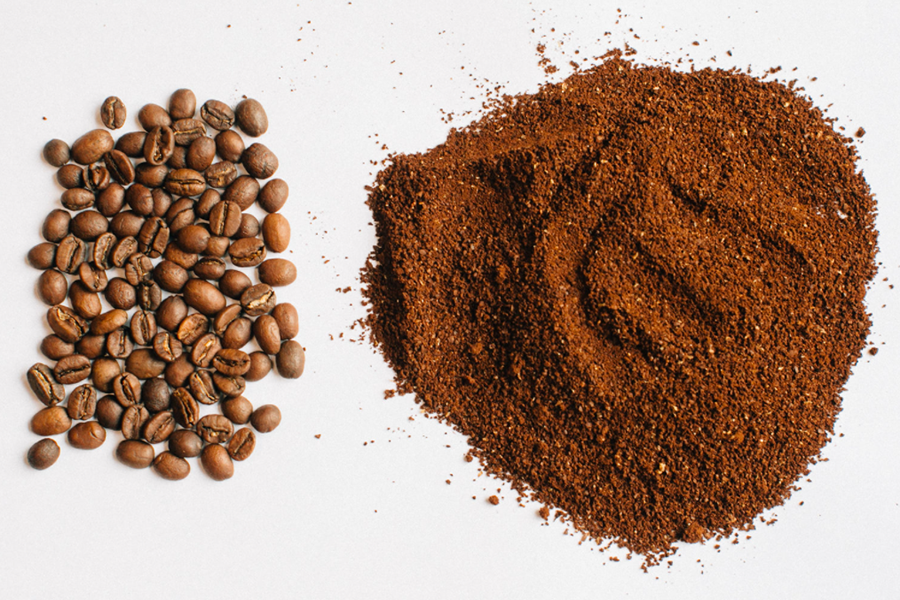Coffee at Home
Pre-Ground Coffee vs Whole Bean: Which Is Best?
When it comes to brewing coffee at home, there are really only two types of coffee drinkers out there: those who use pre-ground coffee and those who use whole beans.
While pre-ground coffee offers a level of convenience, most coffee lovers will agree that using whole beans provides an entirely different and far more enjoyable experience.
There are several reasons why using whole beans provide notable value than pre-ground coffee ever could. Read on to learn more about the pros and cons of each and how you can make the best possible cup at home.
Is it better to buy whole bean or ground coffee?
Using whole beans is far superior to pre-ground coffee for a number of reasons. The primary motivation for buying pre-ground coffee ultimately comes down to convenience, and quite frankly, this is really the only selling point.
When you compare pre-ground coffee with using whole beans, the proof is in the cup.
Considering freshness, flavour, and aroma
Here’s the reality; when you buy pre-ground coffee you’re buying coffee that is basically already stale. Ground coffee loses the majority of its natural flavour after roughly 20 minutes of being ground. Pleasant and exhilarating aromas that would normally accompany a fresh cup would be virtually non-existent after this time as well. When you’re buying pre-ground coffee from the grocery store, you’re buying coffee that was roasted and ground weeks—even months earlier.
The result: a flavourless, aromaless, cup of Joe.
The science behind this is actually quite simple. Air is the enemy of food freshness and coffee is no different.
When coffee is ground—especially a fine grind—oxygen is able to permeate through the grinds incredibly quickly due to their small size. The cells contained within coffee beans can have upwards of 1000 volatile flavours and aromas. Once ground, oxidation occurs as these compounds are exposed to oxygen in the air and after about 15 minutes, the coffee has lost approximately 60% or more of its natural flavour.
As coffee beans are obviously significantly larger in size before they’re ground, oxidation isn’t able to occur as quickly as the whole bean provides a protective barrier for the flavourful and aromatic oils contained within.
That’s not to say whole beans can’t go stale, however, their optimal freshness period can last up to two weeks. Compare that against 20-30 minutes after grinding and you can start to get the idea.
Considering brewing methods
Pre-ground coffee is really only good for an auto-drip regular coffee maker and that is largely due to the size of the coffee grinds. Different brewing methods require different grind sizes and when done improperly, you can end up with a cup that is bitter, sour, or bland.
Since pre-ground coffee gives you no control over the grind, whatever flavours (if any at all) you get are ultimately what you’ll be stuck with.
Below are some examples of different coffee brewing methods and the recommended grind size for optimal flavour, aroma, and enjoyment.
| Coffee Brewing Method | Recommended Grind Size |
| Espresso | Extra Fine |
| Moka Pot | Fine |
| Pour Over | Course – Medium Fine |
| Aeropress | Course -Medium |
| French Press | Course |
Final Thoughts
While pre-ground coffee offers convenience, that’s about all it offers. When you use whole coffee beans you have greater control and customization over the brewing process, which results in a far superior cup in every way.
If you’ve never experienced the difference between a cup brewed from pre-ground coffee vs a cup brewed from freshly roasted and freshly ground whole beans, then you’re missing out on the incredible flavours, tantalizing aromas, and the overall enjoyable experience that fuels the love of coffee around the world.
Are you ready to enjoy a blissful coffee experience right from your own home? Shop our freshly roasted coffee beans and taste for yourself the incredible difference that fresh whole beans can make.

